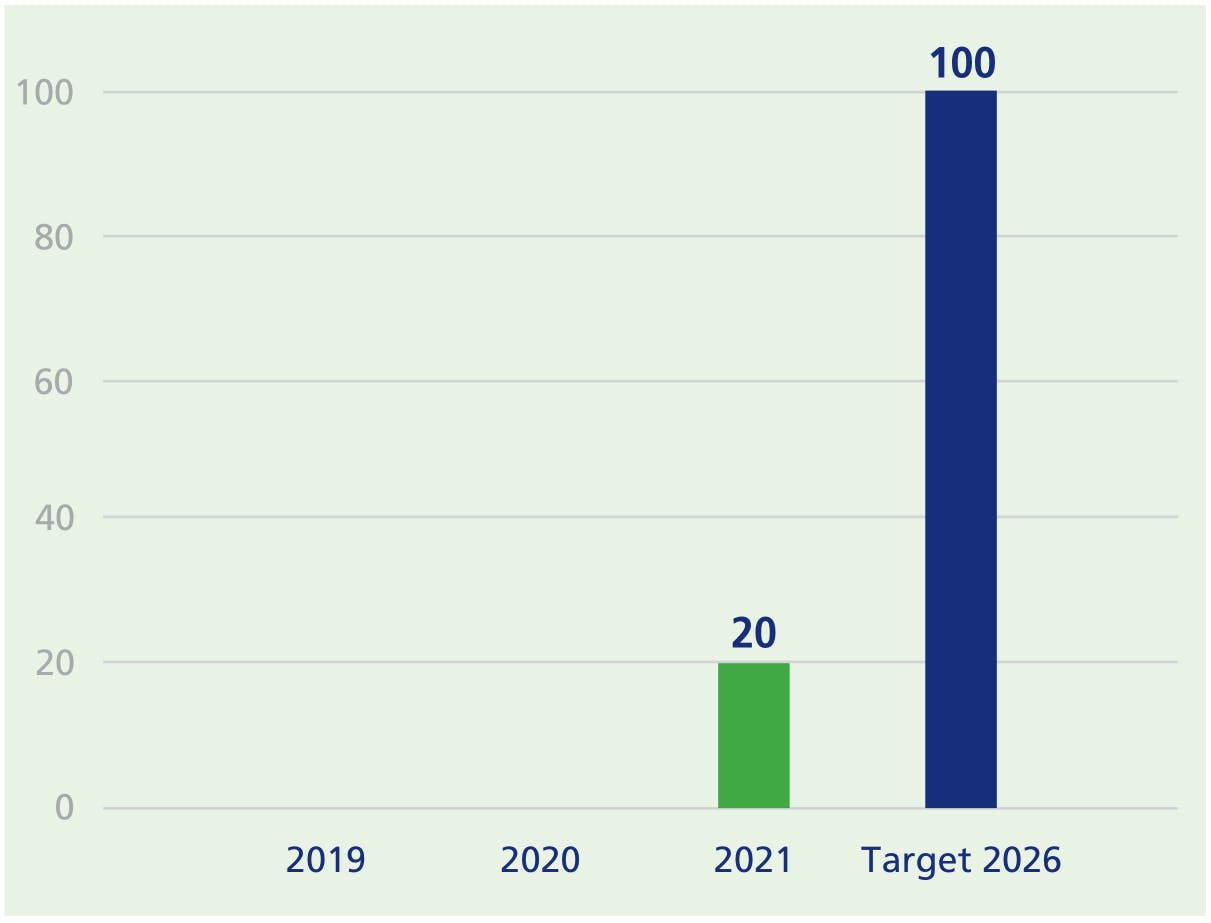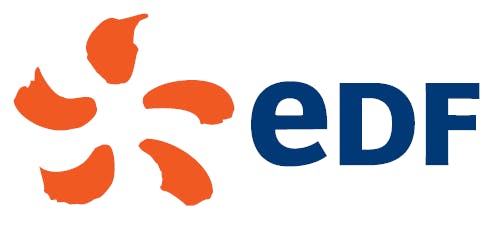3.2.2.1.2 The Group’s commitment
The key performance indicator selected for the commitment to responsible land management relates to the installation of solutions in favour of multiuse of land. This indicator more specifically focuses on the issue of reconciling agriculture and the development of carbon-free power generation, as well as setting up floating photovoltaic parks. The methodology associated with this indicator is described in section 3.6 “Methodology”.
In collaboration with EDF Renewables, EDF R&D commissioned a first agrivoltaic demonstrator on the Renardières site, yielding encouraging results: lucerne production under the panels was twelve times higher than on the control plot.
Implementation rate of innovative solutions encouraging multifunctional land use (%)

This graph shows the rate of implementation of innovative solutions encouraging multifunctionnal land use (in %)
2019 :
2020 :
2021 : 20
Target 2026 : 100
3.2.2.2 Soil and underground management
Pollution of soil and groundwater is one of the potential environmental impacts of the Group’s industrial activities. The environmental policies of the Group entities aim to optimise the use of land and protect these environments against any impacts. Land use and subterranean water use is monitored as part of groundwater monitoring (see 3.2.3.1 “Sustainability of water use”) and biodiversity actions (see section 3.2.1 “Biodiversity”).
3.2.2.2.1 Prevention of soil and subterranean water impacts
| An “in-depth defence” approach | The prevention of impacts relies on an “in-depth defence” approach, including several levels of security built into the protection methods in place at all industrial sites. |
|---|---|
| Protection methods in place | Maintaining the integrity of protection methods; control of effluent and waste management operations; maintaining and inspecting ultimate structures such as retention systems; ensuring that the soil surface remains free from radiological and chemical contamination; reinforcing safeguard measures when transporting fuel or waste; ensuring the availability of emergency kits and carrying out the corresponding drills. |
| Physicochemical and radiological monitoring | EDF also carries out physicochemical and radiological monitoring of the quality of subterranean water at sites by means of a dense network of piezometers. See section 3.2.3.1.2 “Optimisation of water use and reducing pressure on environments –Quality of water and effluents”. |
3.2.2.2.2 Management plans
Proactive and organised approach
For years, EDF has adopted a proactive approach to checking the quality of soil, sub-soil and subterranean water on different production fleet sites (thermal and nuclear).
| Actions taken | Recording of activities liable to have an influence on the quality of soil and subterranean water; setup of regular monitoring of the quality of subterranean water where appropriate; implementation of management measures. |
|---|---|
| Methodology applied for the full facility lifecycle | Checks on activities conducted and carrying out of investigations in case of acquisition of new land; prior characterisation of soil upstream from a project for rational and optimised use; definition of the state of soil and management of any markings during operation; rehabilitation actions following shutdown of activities to minimize impacts. |
| Organisation and dedicated tools | Taking part in works by the French Environment Ministry and standards commissions; centralised technical support for different Group entities (soil and subterranean water) (Ingeum): training courses organised every year on soil management and subterranean water samples; research and development actions with institutional partners (concrete management, soil data use, etc.). |
